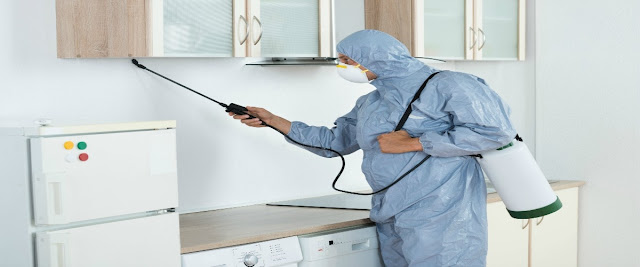coronavirus infection | secure fumigation services
WHO
Fumigation of hospital rooms with high concentrations of toxic chemicals has been proposed to reduce microbial agents on hospital surfaces and to control infections. Chemical fumigation has been used effectively in other areas, such as building decontamination after bioterrorism events, in agriculture, and in residential structures. However, even in these situations, there have been incidents where fumigants have escaped, causing illness and death to exposed workers and the public. Before expanding the use of a potentially hazardous technology in areas where there are vulnerable individuals, it is important to fully weigh benefits and risks. This article reviews the effectiveness of fumigation as a method of inactivating microbes on environmental surfaces and in reducing patient infection rates against the potential risks. Peer-reviewed literature, consensus documents, and government reports were selected for review. Studies have demonstrated that fumigation can be effective in inactivating microbes on environmental surfaces. However, the current consensus of the infection control community is that the most important source of patient infection is direct contact with health care workers or when patients auto-infect themselves. Only one peer-reviewed, before-after study, at one hospital reported a significant reduction in infection rates following chemical fumigation. The limitations of this study were such that the authors acknowledged that they could not attribute the rate reduction to the fumigation intervention. A serious concern in the peer-reviewed literature is a lack of evidence of environmental monitoring of either occupational or non-occupational exposures during fumigation. Currently, there are neither consensus documents on safe fumigation exposure levels for vulnerable bedridden patients nor sampling methods with an acceptable limit of detection for this population. Until additional peer-reviewed studies are published, demonstrating significant reductions in patient infection rates following chemical fumigation and consensus guidance on the safe exposure levels and monitoring methods, chemical fumigation in health care should be conducted only in the most stringently controlled research settings.
<
WHO
Fumigation of hospital rooms with high concentrations of toxic chemicals has been proposed to reduce microbial agents on hospital surfaces and to control infections. Chemical fumigation has been used effectively in other areas, such as building decontamination after bioterrorism events, in agriculture, and in residential structures. However, even in these situations, there have been incidents where fumigants have escaped, causing illness and death to exposed workers and the public. Before expanding the use of a potentially hazardous technology in areas where there are vulnerable individuals, it is important to fully weigh benefits and risks. This article reviews the effectiveness of fumigation as a method of inactivating microbes on environmental surfaces and in reducing patient infection rates against the potential risks. Peer-reviewed literature, consensus documents, and government reports were selected for review. Studies have demonstrated that fumigation can be effective in inactivating microbes on environmental surfaces. However, the current consensus of the infection control community is that the most important source of patient infection is direct contact with health care workers or when patients auto-infect themselves. Only one peer-reviewed, before-after study, at one hospital reported a significant reduction in infection rates following chemical fumigation. The limitations of this study were such that the authors acknowledged that they could not attribute the rate reduction to the fumigation intervention. A serious concern in the peer-reviewed literature is a lack of evidence of environmental monitoring of either occupational or non-occupational exposures during fumigation. Currently, there are neither consensus documents on safe fumigation exposure levels for vulnerable bedridden patients nor sampling methods with an acceptable limit of detection for this population. Until additional peer-reviewed studies are published, demonstrating significant reductions in patient infection rates following chemical fumigation and consensus guidance on the safe exposure levels and monitoring methods, chemical fumigation in health care should be conducted only in the most stringently controlled research settings.
<

all service in kuwait
ReplyDeletehttps://www.fi-elkuwait.com/%D9%85%D9%83%D8%A7%D9%81%D8%AD%D8%A9-%D8%AD%D8%B4%D8%B1%D8%A7%D8%AA-%D8%A7%D9%84%D9%83%D9%88%D9%8A%D8%AA/
https://www.fi-elkuwait.com/%D9%85%D9%83%D8%A7%D9%81%D8%AD%D8%A9-%D8%AD%D8%B4%D8%B1%D8%A7%D8%AA-%D8%A8%D8%A7%D9%84%D9%83%D9%88%D9%8A%D8%AA/
معلم صحي
ReplyDeleteسباك
تسليك مجاري
فني صحي
فني صحي الكويت
معلم صحي ممتاز
معلم صحي
مكافحة حشرات
معلم صحي
ReplyDeleteسباك
تسليك مجاري
فني صحي
فني صحي الكويت
معلم صحي ممتاز
معلم صحي
مكافحة حشرات بالكويت